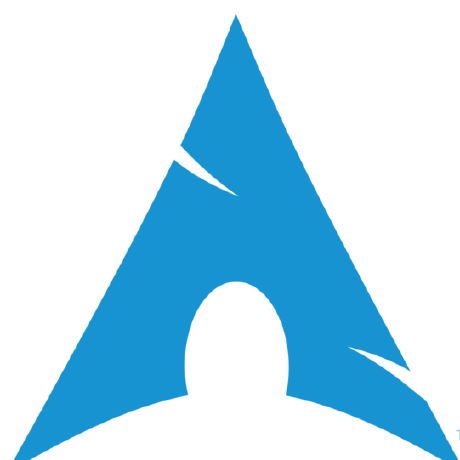
microservice-laravel
Microservice Architecture for Laravel
Microservice Architecture for Laravel
Table of Contents
- Overview
- Technologies
- Getting Started
- Installation
- Configuration
- Generate RSA Keys
- Running the Services
- Microservices
- Need to Implement
- Contributing
- License
Overview
This project is a microservice-based architecture designed to provide scalable and maintainable solutions. It includes various technologies for managing service discovery, messaging, and data integration.
Technologies
- Zookeeper: Used for service discovery and coordination.
- ZooNavigator: A web-based UI for managing Zookeeper instances.
- Kafka: A distributed streaming platform used for building real-time data pipelines and streaming applications.
- Schema Registry: Manages and enforces schemas for Kafka topics.
- Kafka Connect: A tool for scalable and reliably streaming data between Apache Kafka and other systems.
- Kafka UI: A web-based UI for managing and monitoring Kafka clusters.
- PostgreSQL: A powerful, open source object-relational database system.
Getting Started
Ensure you have the following software installed:
- Docker
- Docker Compose
To get a local copy of this project up and running, follow these simple steps.
Installation
- Clone the repository:
git clone https://github.com/erayaydin/microservice-laravel.git cd microservice-laravel - Copy the sample
.env.exampleto.env:cp .env.example .env - Edit necessary parts in
.envfile as needed.
Configuration
The configuration settings are stored in the .env file. Customize the necessary parts as needed.
-
ZOOKEEPER_IMAGE: Docker image name to use for zookeeper instances. Default:
confluentinc/cp-zookeeper -
ZOOKEEPER_IMAGE_VERSION: Docker image version for ZOOKEEPER_IMAGE image. Default:
7.6.1 -
ZOONAVIGATOR_VERSION: ZooNavigator UI image version to install with services. Default:
1.1.2 -
KAFKA_IMAGE: Docker image name to use for kafka instances. Default:
confluentinc/cp-kafka -
KAFKA_IMAGE_VERSION: Docker image version for KAFKA_IMAGE image. Default:
7.6.1 -
SCHEMA_REGISTRY_IMAGE: Docker image name to use for SchemaRegistry instances. Default:
confluentinc/cp-schema-registry -
SCHEMA_REGISTRY_IMAGE_VERSION: Docker image version for SCHEMA_REGISTRY_IMAGE image. Default:
7.6.1 -
KAFKA_CONNECT_IMAGE: Docker image name to use for kafka connect instances. Default:
confluentinc/cp-kafka-connect -
KAFKA_CONNECT_IMAGE_VERSION: Docker image version for KAFKA_CONNECT_IMAGE image. Default:
7.6.1 -
WWWUSER: User id for microservice instances. Default:
1000 -
WWWGROUP: Group id for microservice instances. Default:
1000 -
APP_[SERVICE]_DB_IMAGE_VERSION: PostgreSQL instance version for the
[SERVICE]microservice. Default:15 -
APP_[SERVICE]_PORT: External port of the
[SERVICE]microservice. It will be increased 1 by 1 starting from
8082. -
APP_[SERVICE]_XDEBUG_MODE: Enable xdebug extension for the
[SERVICE]microservice. Default:off -
APP_[SERVICE]_XDEBUG_CONFIG: If xdebug enabled, xdebug integration config. Edit for development environment needs.
Default:-client_host=host.docker.internal -
APP_[SERVICE]_DB_PORT: External port of the
[SERVICE]microservice's database. It will be increased 1 by 1
starting from5432.
Generate RSA Keys
You need to generate a pair of 4096-bit RSA private and public keys for inter-service authentication and authorization. These keys will be shared between services.
openssl genrsa -out secrets/oauth-private.key 4096
openssl rsa -in secrets/oauth-private.key -pubout -out secrets/oauth-public.key
Running the Services
To start all the services, run:
docker compose up -d
This command will start all the containers defined in the docker-compose.yml file.
Remember to run migrations and necessary adjustments before testing services. Like:
docker compose exec -u app security php artisan migrate
Microservices
Security Service
The Security Service is responsible for handling user authentication and authorization. Authentication and authorization will be handled with OAuth2.
Endpoints
-
GET /health: Health check endpoint. It'll respond with 200 status code. -
POST /users: Create new user. It'll respond with 201 status code if success. -
GET /oauth/authorize: Show authorization to the end user. -
POST /oauth/authorize: Approve authorization. -
DELETE /oauth/authorize: Deny authorization. -
GET /oauth/clients: Get oauth clients for the user. -
POST /oauth/clients: Create new oauth client. -
PUT /oauth/clients/{client_id}: Update an oauth client. -
DELETE /oauth/clients/{client_id}: Delete an oauth client. -
GET /oauth/personal-access-tokens: Get personal access token oauth clients for the user. -
POST /oauth/personal-access-tokens: Create new personal access token oauth client. -
DELETE /oauth/personal-access-tokens/{token_id}: Delete a personal access token oauth client. -
GET /oauth/scopes: Get all registered scopes. -
POST /oauth/token: Issue new token with specified strategy. -
POST /oauth/token/refresh: Refresh access token with refresh token. -
GET /oauth/tokens: Get authorized access token for the user. -
DELETE /oauth/tokens/{token_id}: Delete an access token.
Data Store
- PostgreSQL: The Security Service uses PostgreSQL to store user credentials and authorization data.
License Service
The Security Service is responsible for handling user licenses. Auth verification will be handled with JWT key decoding.
Endpoints
-
GET /health: Health check endpoint. It'll respond with 200 status code. -
GET /me: Get current user license information. -
GET /users/{user}: Get user's license information. (needadmin.licensesscope).
Data Store
- PostgreSQL: The License Service uses PostgreSQL to store license information.
File Management Service
The File Management Service is responsible for handling file operations. End user can upload and download files.
Endpoints
-
GET /health: Health check endpoint. It'll respond with 200 status code. -
GET /files: List of current user's uploaded files. -
POST /files: Upload new file to user's bucket. -
GET /files/{file}/download: Downloads the given file in attachment mode.
Data Store
- PostgreSQL: The File Management Service uses PostgreSQL to store file metadata.
Need to Implement
- Use
Kongapi-gateway to single entrypoint. - Implement permission and scope system to license
/users/{user}endpoint. - Use
docker secretto share oauth private and public keys. - Implement
ObjectStorageservice to manage buckets. - Use RDKafka data processor instead of the current one.
- Define schemas for
user.createdandlicense.updatedkafka messages. - Remove config files for
servicesandkafka. Use provider to bind instances with values. - Use kafka-connect1 for connect services to kafka cluster.
- Fix style issues and apply on CI.
- Add ELK stack and/or Grafana metrics.
- Add unit, integration and e2e tests.
- Add k8s yaml files.
- Add OpenAPI documentation for the api-gateway and services.
- Use kong+security to validate and decode OAuth2
Contributing
Contributions are what make the open-source community such an amazing place to learn, inspire, and create. Any contributions you make are greatly appreciated.
- Fork the Project
- Create your feature branch (
git checkout -b feature/amazing-feature) - Commit your changes (
git commit) - Push to the branch (
git push origin feature/amazing-feature) - Open a pull request with detailed description.
License
Distributed under the MIT License.